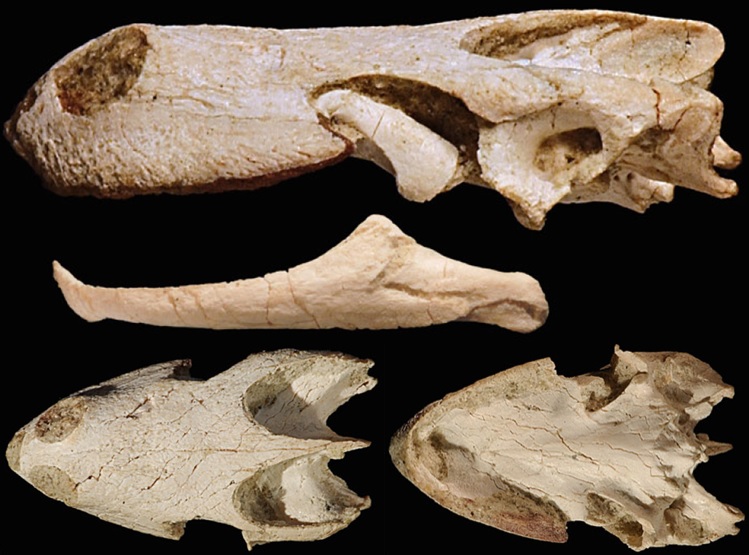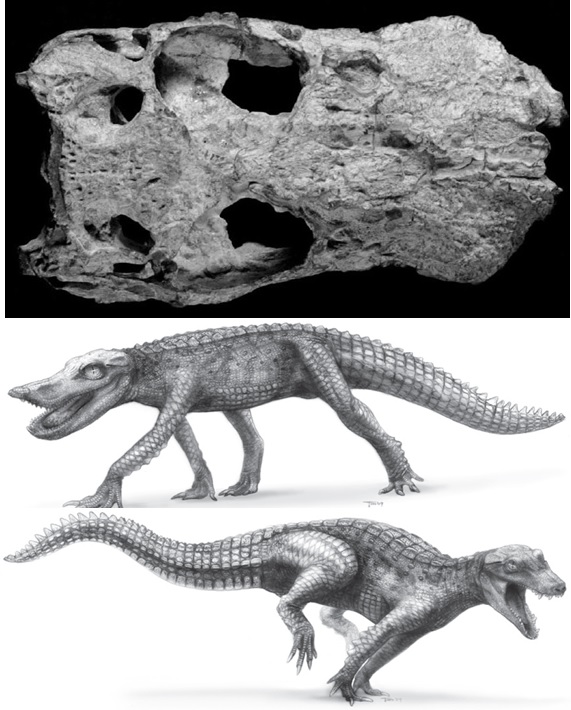Elrhaz Fm
Type Locality and Naming
Faure, 1954; the town of Elrhaz. The Type Section of the lower and middle Members is taken on the cliff along the eastern side of the Zelic kori. The Type Section of the upper Member is taken from a cliff south of Elrhaz (Fabre (1983)). Gadoufaoua Paleontological site. Group: Tégama Gr.
References: Faure, 1966; Taquet, 1976; Buffetaut & Taquet, 1977; Buffetaut & Taquet, 1979; de Lapparent de Broin, 1980; Taquet, 1982; Galton & Taquet, 1982; Fabre et al., 1983; Sereno et al., 1994, 1998; Taquet & Russell, 1998, 1999; Wenz, 1999; Sereno et al., 2001; de Lapparent de Broin, 2002; Blackburn & Sereno, 2002; Sereno et al., 2003; Rogers et al., 2005; Sereno & Brusatte, 2008; Sereno & Larsson, 2009; Le Loeuff et al., 2010, 2012; Sereno & ElShafie, 2013; Web-05. Group: Tégama Gr.
Synonym: El Rhas, El Rhaz. The upper part of the Girmaga Formation and lower part of the Mohra Formation of Molinas (1965). Equivalent(s): Tagrezou Fm (part of the Téfidet Gr) in Téfidet Sub-Basin.
Lithology and Thickness
The Elrhaz Formation is composed almost exclusively of cross-bedded medium-grained fluvial sandstones of low relief. Three Members are distinguished: two clay Members framing a sandier median Member. The lower and middle Members in the Type Section show black, purple, or red clays and black limestones with vertebrate bones overlain by coarse sandstone with cross-bedded and oblique stratifications, sometimes containing barite nodules. Cu (malachite) and U indices are also present in these layers. The upper Member in the Type Section is shaly and calcareous and very rich in large vertebrates, crocodiles and dinosaurians. At the Type Section, a little more than 80 m (can reach 120 m in the southeast). The formation thins towards the NE, where the limestone slabs at the top of the formation meet with the paleo reliefs of the Precambrian.
Relationships and Distribution
Lower contact
Underlying Unit is the coarse sandstones of Tazolé Fm with silicified wood
Upper contact
Overlying unit is the Echkar Fm.
Regional extent
GeoJSON
Fossils
Fish (bony fish), hybodont shark), crocodiles (Anatosuchus minor, Sarcosuchus imperator, Stolokrosuchus lapparenti, Araripesuchus wegeneri (Fig. 2)), turtles (Laganemys tenerensis) (Fig. 1), Platycheloides cf. nyasae and dinosaurians (the abelisaurid Kryptops palaios, the carcharodontosaurid Eocarcharia dinops, the spinosaurid theropods Baryonyx, Suchomimus tenerensis and Cristatusaurus lapparenti, the diplodocoid sauropod Nigersaurus taqueti (Rogers et al., 2005), the ornithopods Ouranosaurus nigeriensis, Valdosaurus nigeriensis and the iguanodon Lurdusaurus arenatus), pterosaurs (left humerus of Tapejaridae, a partial wing of Anhangueridae), freshwater bivalves.
[Figure 1. Turtle skull of Laganemys tenerensis in left lateral (top), dorsal (left) and ventral (right) views found in Gadoufaoua paleontological site (Source: Sereno & ElShafie, 2013).]
[Figure 2. Top: Skull of crocodilian Anatosuchus minor in dorsal view; length about 12 cm (Source: Sereno et al., 2003). Bottom: Flesh reconstruction of the crocodilian Anatosuchus minor (top) and Araripesuchus wegeneri (bottom) (Source: Sereno & Larsson, 2009).]
Age
Depositional setting
Continental
Additional Information

